Uganda Health Workforce Study: - IntraHealth International
Uganda Health Workforce Study: - IntraHealth International
Uganda Health Workforce Study: - IntraHealth International
Create successful ePaper yourself
Turn your PDF publications into a flip-book with our unique Google optimized e-Paper software.
• When workers take leave for studies (or other purposes), they are still listed ascurrent workers at their facilities, creating shortages but not vacancies that can befilled.• Many health workers blamed decentralisation for reduced interest in positionsavailable in remote locations. The idea of being bonded to a rural district for life isenough to keep a doctor from even applying, some respondents indicated, and ruralhealth facilities are left to recruit and retain workers on their own.• The relationship between district-elected leadership and the district directors ofhealth services and hospital administration can be problematic. When local leadersdon’t prioritise health, facilities suffer.• There is corruption among some who hold positions of power. For example,occasionally health workers are required to pay or offer personal services to havetheir papers or paycheques processed.Comment: These ethical and organizational issues represent significant challenges in themanagement and control of the health system, and likely contribute significantly to healthworker satisfaction, motivation and morale. Many of these issues cannot be addressed at thefacility level and will need the attention of the MOH.5. ConclusionsThe overall satisfaction among <strong>Uganda</strong>n health workers is not high—fewer than half therespondents said that they were satisfied with their jobs. Satisfaction with salary isparticularly low, and doctors are the least satisfied group. Furthermore, working and livingconditions are very poor, and the workload is judged to be unmanageable. Workingconditions are better in the private (non-profit) sector than in the public sector, butcompensation and job security were viewed as superior in the public sector.Despite these conditions, however, health workers have been in their jobs a long time (81%say they are still in their first jobs) and are loyal (average time with their employers is 13years). However, about one in four would leave their jobs soon if they could, and more thanhalf of doctors (57%) say they would like to leave their jobs.Some demographics of the health workforce will be important to monitor during a policyplanning process. The average health worker is not young (mean age 39) and has manydependents (average of seven) to support. Most workers are employed where they wereborn or trained, suggesting some implications for recruitment and retention. In Kampala,satisfaction is lower and the intent to leave jobs is higher than in other regions.The important correlates of intent to stay or job satisfaction include the importance ofsalary (but not the satisfaction with salary, which is uniformly low), a good match betweenthe job and the worker, active involvement in the facility, a manageable workload, supportivesupervision, flexibility to manage the demands of work and home, job security and a jobperceived as stimulating or fun. Some of these issues could be addressed without a largecapital investment.Some of the field observations about ethical and organizational issues bear furtherexamination. Systems that tolerate incompetence, inattention, inequity, faulty decisionmakingor corruption are signalling to health workers that their work is not valued. Nothingcan be more detrimental to motivation than that.<strong>Uganda</strong> <strong>Health</strong> <strong>Workforce</strong> <strong>Study</strong>:Satisfaction and Intent to Stay Among Current <strong>Health</strong> Workers9


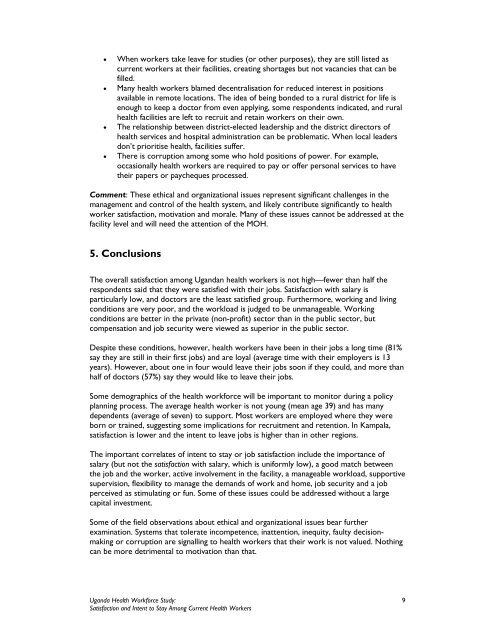
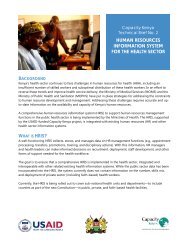
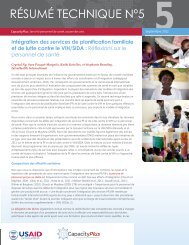
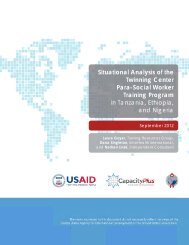
![view Unit 14: Emergency Contraceptive Pills [PDF 319KB]](https://img.yumpu.com/50082157/1/184x260/view-unit-14-emergency-contraceptive-pills-pdf-319kb.jpg?quality=85)

![view Unit 8: Intrauterine Contraceptive Devices [PDF 992KB]](https://img.yumpu.com/47853006/1/184x260/view-unit-8-intrauterine-contraceptive-devices-pdf-992kb.jpg?quality=85)

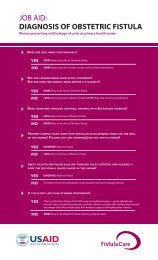

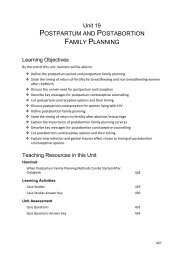
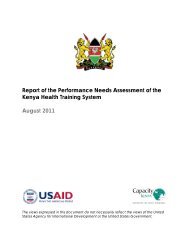
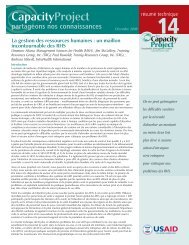

![view Unit 15: Lactational Amenorrhea Method [PDF 259KB]](https://img.yumpu.com/30000479/1/184x260/view-unit-15-lactational-amenorrhea-method-pdf-259kb.jpg?quality=85)